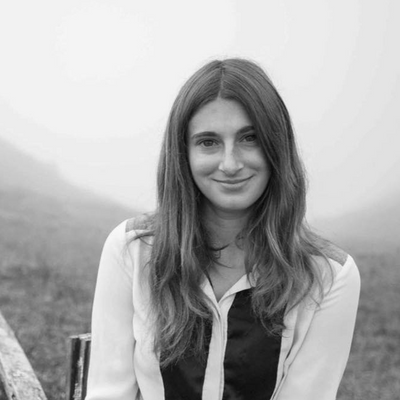ABOVE: JOHNS HOPKINS BLOOMBERG SCHOOL OF PUBLIC HEALTH
Noel Rose, an immunologist and microbiologist whose early experiments underpinned the molecular mechanisms of autoimmune disease, died of a stroke July 30. He was 92.
As a young medical student, Rose worked alongside his mentor, Ernest Witebsky of the University at Buffalo, studying organ-specific antigens. The prevailing hypothesis for the last half century had been that the body was incapable of producing antigens against itself, an idea known as horror autotoxicus. Witebsky’s own academic lineage stretched back to the idea’s original progenitor, Paul Ehrlich, who had coined the term in the late 19th century.
But Rose showed that rabbits injected with their own thyroid-derived antigens mounted an immune response against the invading molecules that damaged or destroyed the animals’ thyroid. The body was indeed capable of attacking itself. The results were so outlandish that the first journals refused to publish...
“In every aspect, [Rose] is the father of autoimmunity,” George Tsokos, a professor of rheumatology at Harvard Medical School, told The Scientist in a profile of Rose this year. “The man opened a whole chapter in the book of medicine.”
Currently, there are more than 80 recognized autoimmune diseases, including lupus, type 1 diabetes, and rheumatoid arthritis, that have sickened more than 20 million Americans. Speaking to The Washington Post in 1995, Rose called autoimmune diseases “one of the big three, meaning cancer, heart disease, and autoimmune disease.”
Rose was born December 3, 1927, in Stamford, Connecticut. His father, a physician who served during World War II, became a specialist in treating rheumatic fever, now considered to be an autoimmune disease, the Post reports.
Prior to his groundbreaking work, Rose frequently brushed up against the limitations of medical knowledge at the time. When he began his undergraduate degree at Yale University in the mid-1940s, he wanted to study microbiology, but he was only able to attend a handful of classes on the topic. Instead, he majored in zoology and took the electives in microbiology, which were taught by botanists—bacteria were largely thought to be plants at the time, The Scientist reported in June.
Rose decided to complete a PhD ahead of attending medical school. He joined the lab of microbiologist Harry Morton at the University of Pennsylvania in 1948, where he spent the next several years studying the flagella-like motor structures of Treponema pallidum, the bacterium that causes syphilis.
See "The Father of Autoimmunity: A Profile of Noel Rose"
Next, Rose enrolled as a medical student at the University at Buffalo, where he would make many of his most important medical discoveries. It was here, working alongside Witebsky, that he first demonstrated autoimmunity in rabbits.
Rose extracted a protein called thyroglobulin from humans, horses, and pigs, treated it with a solution called Freund’s adjuvant to induce an immune response, and injected it into rabbits. Even though the injected thyroglobulin was similar to the protein already in the rabbits’ body, the animals still produced protective antibodies. This was true even when the protein, primed by the adjuvant that induces an immune response, came from another rabbit, and most surprisingly, when the protein was extracted and re-injected into the same animal. When he looked at the thyroids of these rabbits, he found that they were often damaged, and sometimes destroyed, by the body’s own immune response.
After having their findings rejected during peer review, Witebsky and Rose turned to studying autoimmunity in humans, determined to replicate and refine their work. They focused on Hashimoto’s disease, a common thyroid condition with no identifiable cause, showing that serum taken from patients developed the same type of antibodies when exposed to thyroglobulin that they had seen in rabbits. “We went ahead and showed that this same destruction applies to humans and that you could induce a disease in an organ by immunizing it with a specific antigen of the same species,” Rose had told The Scientist. “And that was autoimmunity.”
Having overturned the idea of horror autotoxicus, Rose says, the work “came out of the walls,” and he spent the next several decades furthering the study of autoimmune diseases. He graduated with his MD in 1964 and remained at the University at Buffalo. According to a memorial page by Johns Hopkins University, where his career would eventually take him, his lab at Buffalo was the first to show that the genes for the major histocompatibility complex, closely linked on human chromosome six, contain the primary genes that determine the risk for autoimmune diseases.
Rose moved his lab to Wayne State University in 1973, where he remained for almost a decade before finally accepting a position at Johns Hopkins in 1981 in the Bloomberg School of Public Health. There, Rose focused on environmental conditions that could trigger disease. In many diseases, Rose told The Scientist, “genetics was always less than half the risk. We thought something from the environment must be involved.”
His later work focused on myocarditis, an inflammation of the heart muscle, and Rose was still working up until his death. He found great promise in the advent of big data and using it to analyze hundreds or thousands and patients to identify the best possible treatments and preventives. “What we want to do is avoid the train wreck from the beginning, and I think we can begin to do that,” Rose told The Scientist. “That’s what I’m excited about.”
Rose is survived by his wife of 69 years, Deborah, two sons, two daughters, 10 grandchildren, and five great-grandchildren.
Correction (August 12): We mistakenly included AIDS in a list of autoimmune diseases and referred to Hashimoto's disease as a rare condition, when in fact it is common. The Scientist regrets these errors.
Interested in reading more?







